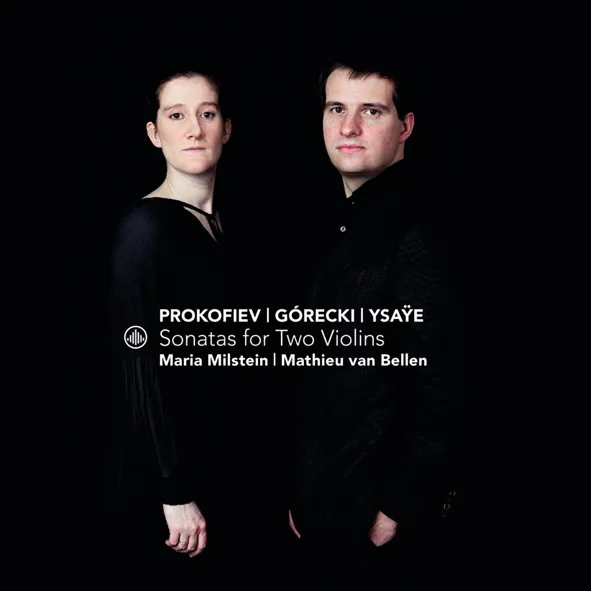
Górecki * Prokofiev * Ysaye Prokofiev: Sonata for Two Violins, Op. 56; Górecki: Sonata for Two Violins, Op. 10; Ysaÿe: Sonata for Two Violins Maria Milstein (violin), Mathieu van Bellen (violin) Challenge Classics CC72807 64.01 mins
A full recital of repertoire only for two violins is a rarity. But does one ‘forget about the restricted means available’, as the liner notes claim? Yes, largely, especially when the featured composers offer so many ingenious solutions to the lack of a lower range.
The combination of Prokofiev, Górecki and Ysaÿe is not obvious, although the music all stems from the same half-century. Of the three works, Prokofiev’s Sonata Op. 56 feels musically the slightest, despite this reading, which is sympathetic and exciting in turn. Perhaps the third movement could be still more songful, but Van Bellen and Milstein certainly spark off the playful, vulgar, percussive fourth movement.
Górecki’s 1957 Sonata is another proposition altogether. From the outset, divisions between melody and accompaniment emerge, resulting in a grounded, three-dimensional feel. This is richly textured and electrically exciting writing; the opening Allegro, with its chugging train texture, veers into violinistic wailing, shouting, whispering, lamenting and screaming. This requires the most precise ensemble as well as a huge expressive range – and the duo delivers even if, again, the energetic passages are more persuasive than the lyrical. This astonishingly rich work is a welcome discovery.
Ysaÿe’s Sonata is richly textured, often evoking the sound of a ‘bottomless’ string quartet; an expansive work, it slightly outstays its welcome but is nevertheless a fascinating document of possibilities for the instrumental combination. By the end I’d lost the initial sense of ‘bottomlessness’ and simply enjoyed floating above the ground. Natasha Loges
